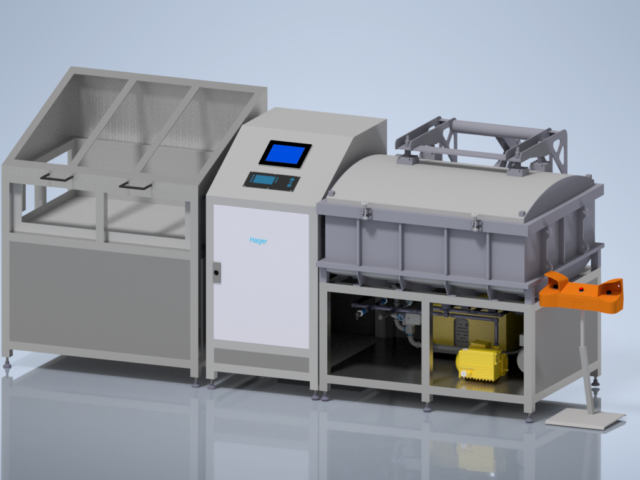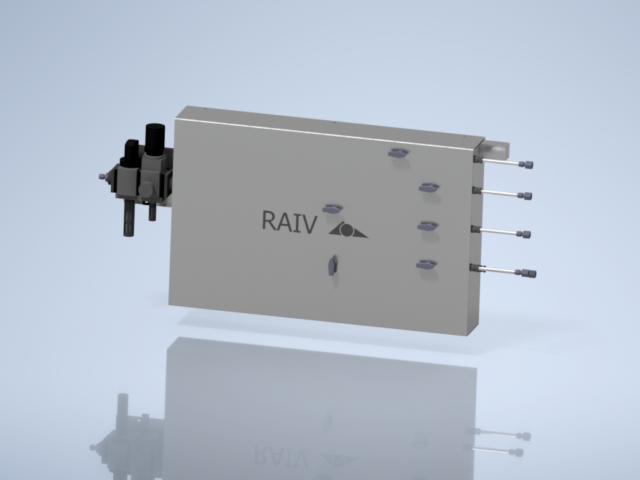Decay test
Differential Pressure TestPressure decay leak tests involve measuring the drop in pressure on the interior of a part. To conduct the test, the air is injected into the test part until reaches the target pressure. The air source is then cut to isolate the pressure and the loss of pressure (decay) is measured over a specified time period. A loss in pressure indicates the presence of a leak.
Differential pressure decay leak testing uses traditional pressure decay parameters, but tests for leaks by measuring a pressure change between a reference volume of air and the test part volume. In differential pressure decay leak detection, the test measures the rate of pressure loss between the reference volume and the part volume as a leak. It is quick, reliable, and sensitive enough to detect small leaks.
High pressure leak bench
(Device for tightness testing by bubbles and vacuum)
The device is designed for tightness tests of aluminium exchangers.
The device is connected into a single whole with its own control system and SW. The device is designed to allow for individual selection between compressed air and water basin (bubble) testing or tightness testing by helium in a vacuum chamber.
Just one testing circuit at a time may be used.
The separately assembled circuits are installed in specially constructed skeletons with technology entries into the workspace where the tested sample is connected.
Sealing test
The device is used to measure the leakage of the sample in temperature chambers at low and high temperatures. The sample is heated or cooled to the required temperature then the sample is filled by gas (helium). When the device filling the sample, the flow rate, pressure and temperature are measured. The sample is then drained and the size of the leak in the sample is evaluated.
Device for measuring the tightness of a sample under water
The device is used to measure the leakage of the sample under water. Depending on the type of sample, the operator connects the hoses to the sample and selects the required test. Then, using the manual double button, the device closes the chamber and automatically launches the sample under water. The sample is then pressurized to the required pressure, depending on the type of sample. The operator visually inspects the sample (bubbles) for leaks. Then the test ends when the pressure sample is discharged, the chamber is opened and the sample rises above the water surface. The whole structure is robustly designed due to high pressures and possible destruction of the sample. The whole system is automatic.




